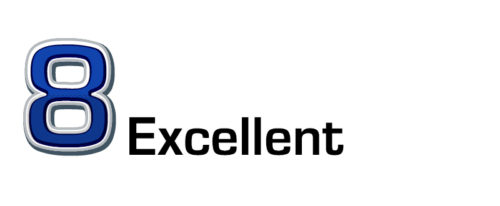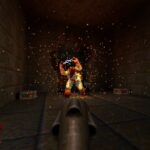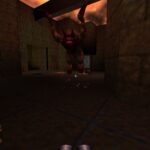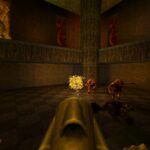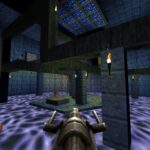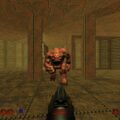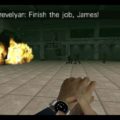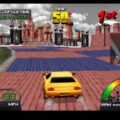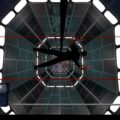Developer: Midway Publisher: Midway Release: 03/24/98 Genre: Fps
The Nintendo 64 library was far from being as diverse as the PlayStation. However that also meant that the genres it specialized in were really good. Aside from racing games and platformers it was the system for first person shooters at the time. It is easy to see why: aside from its technical specs the four controller ports made deathmatch easily accessible. Unfortunately when Doom hit the system it lacked this crucial feature. Midway would not make the same mistake twice when porting the seminal Quake to the system. This is an excellent conversion of the legendary PC title.
Mankind has developed Slipgate technology which allows them to teleport to distant locations. These gates also allow exploration of other dimensions as well. Unfortunately this comes back to bite us in the ass as demons from an unknown dimension cross over to Earth. As the last surviving member of Operation Counter-Strike it is now your job to take the fight to them and hopefully stop the invasion.
The premise is slightly similar to Doom however Quake is the next evolution of that formula. The initial software release of Quake was a cost efficient means of developing games in 3d without the use of a 3d card. While that was cool it was GL Quake that truly turned it into a phenomenon. By taking advantage of 3d acceleration it enabled colored lighting, filtering effects, and a generally clean look that was a step above similar efforts in the PC space. The Quake engine (or iD Tech 2) would become a pillar of the PC industry for years in one form or fashion. GL Quake is the version Quake 64 is based on and Midway has done a bang up job bringing the game over mostly intact.
The weapon selection of Quake is vast. Overall there are less than in Doom however they are more interesting, especially their relation to each enemy. The pistol is replaced by a more capable shotgun with a double barreled variant that remains powerful until the end. Instead of a chain gun you have the nail gun which eats through enemy but tears through enemies. The super nail gun is one of the strongest in the gun. The rocket launcher is still present and those that are skilled can rocket jump, a skill more critical to multiplayer. The grenade launcher is the coolest: grenades bounce off walls which enables all kinds of ridiculous feats. The thunderbolt is the most powerful but cells are rare, kind of like the BFG.
Quake has an elite array of enemies that steadily introduced over the course of the game. Grunts are exactly that, cannon fodder. Knights are not especially strong but attack in groups and from areas where they can ambush you. Ogres are introduced early on yet remain one of the biggest threats until the conclusion. They have a chainsaw for close combat and a grenade launcher that can bounce grenades off walls the same as you. And they do so with lethal accuracy. Zombies do not generally pose a threat. However you need to gib them to kill them permanently and rockets/grenades are not always readily available.
The stronger creatures become more common as you progress. Fiends can leap far meaning a retreat is not always a guarantee. Death Knights are more powerful than their brethren and more resilient. You can take advantage of the wide berth of their attack to cause monster infighting however. The Vore always presents a terrifying encounter. With their aggressive homing attacks and high health pray you have tons of ammo and a wall to hide behind. The worst of all is the shambler, a giant beast that shrugs off rockets and is beast dealt with using the nail gun. ID could have easily upped the difficulty by spawning them more frequently but keep them in reserve, making them all the more frightening when they appear.
Generally speaking the level design is fantastic. Since the game is in full 3d the maps are more complex. Rooms stack on top of each other and paths wind and twist constantly. It is not uncommon to see numerous enemies attacking from several layers above as if to flex the underlying technology. With this added complexity comes a better strategy when dealing with certain enemies. Every enemy is weak to a particular weapon and has specific behavior. The Shambler will fry you with lightning if you stray too far. This is unavoidable in the open but walls and pillars block it. A point blank shotgun blast will often knock an ogre on its back. And the only way to deal with a Vore is to play hide and seek. Despite everything I just described the gameplay does get stale.
Like Doom the objective of every level in Quake is simple: find the keys necessary to open doors and survive until the exit. Occasionally there are environmental puzzles to solve but these are few and far between. If there is one major criticism to lobby at the game it is that it is repetitive. Quake succeeds due to its cool weapons, creative demons, and general atmosphere. However at twenty-six levels it does get repetitive no matter how brilliant the level design is. It also released at a time when games such as Goldeneye and Hexen were raising the bar for solo campaigns. The planned action RPG elements would have gone a long way toward making the single player better. Although Quake is not as good as the aforementioned titles in single player it still has merit.
Midway wisely delayed Quake to add a multiplayer mode after the criticism of Doom 64. Sadly the game only offers split screen deathmatch for two players. At the time of its release Quake’s split screen multiplayer was limiting. Most N64 games let alone shooters offered 4 player deathmatch as well as a host of options to tailor the experience with Goldeneye setting the standard. The various items that were remnants of its discarded adventure elements spice things up but not enough in my opinion. On PC Quake was a much better multiplayer game than single player so it is sad that they could not replicate that for its console debut.
The N64 does an admirable job replicating the look of GL Quake with smart compromises. The geometry and certain environmental elements have been removed or cut back and the game runs at a lower resolution leaving the game slightly blurry. The tradeoff is that the frame rate is high and mostly stable, only dipping in extreme circumstances. The sound design is a point of contention. The excellent soundtrack is gone as the game relies on ambient sound instead. This works wonderfully as the sound design was already great to begin with. You can identify every enemy due to their unique grunts and cries and prepare accordingly. It is genuinely terrifying to hear multiple Vores hiding behind the walls and you know they will come tumbling down once you grab that key. The entire game is full of moments like this and it plays off the system’s weakness in this area.
In Closing
Overall Quake is an excellent version of a classic game. The years since its initial release mean other titles have leapfrogged it when playing solo. However while not quite as good the campaign is still worth running through at least once. Plenty of content and a high challenge give this one plenty of longevity.
